Mike Yardley tries out Browning’s new A5, a semi-auto with a proud heritage
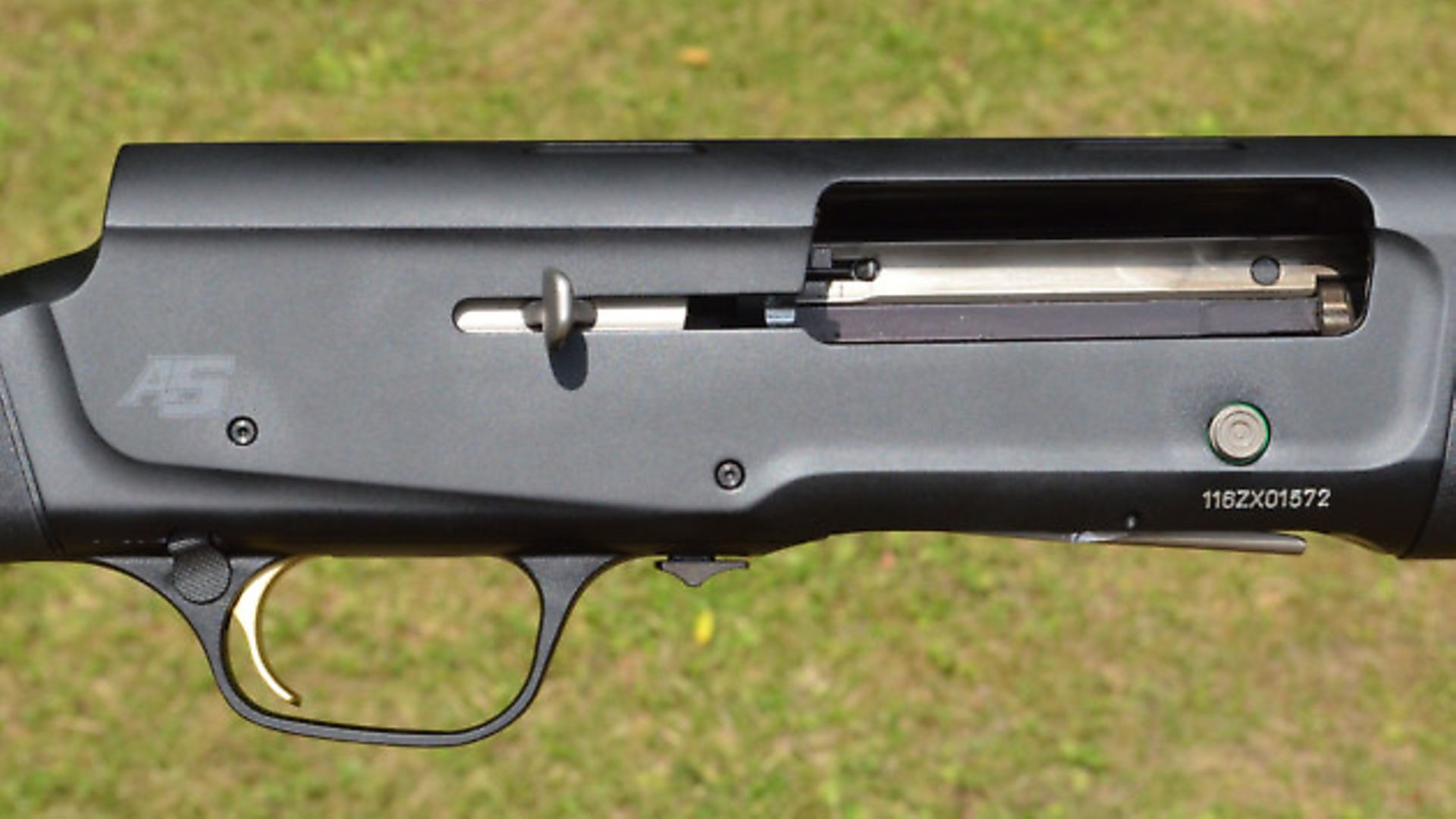 credit: Archant
credit: Archant
This year Browning introduced a new semi-automatic shotgun – the inertia operated A5. Retro-styled on the old long-recoil Auto 5 (also sometimes called the A5), it has the classic humpback receiver (which Browning claims helps with target perception), but the alloy action, though recoil-activated, is different to the old gun which was notable for its moving barrel. The new A5 uses what Browning calls the ‘Kinematic Drive System’ – the Browning version of the Benelli inertia mechanism. Before considering it further, though, a few more words on the original Auto 5 are in order.
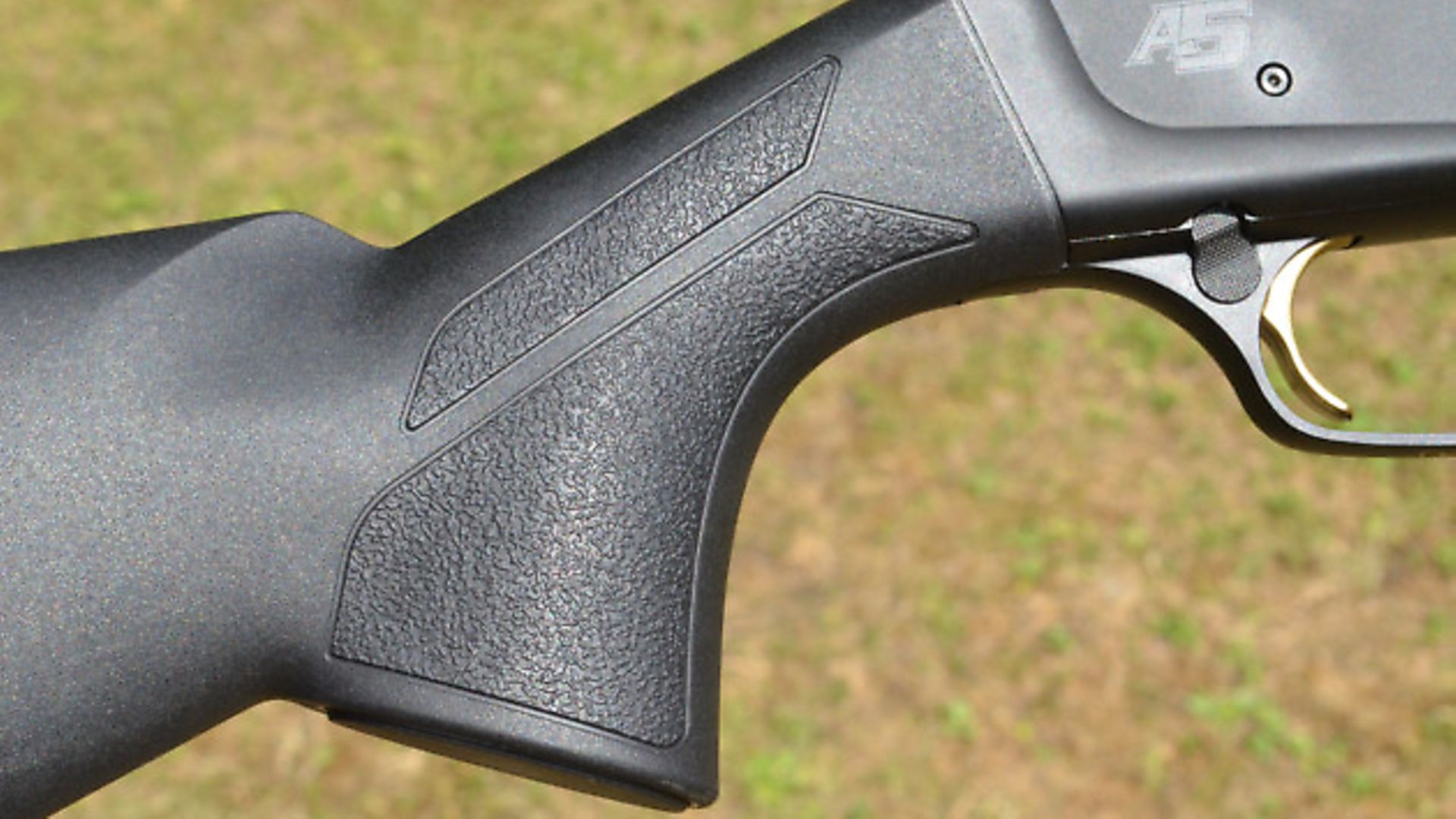 credit: Archant
credit: Archant
The old A5, made in vast numbers for a century, is a sporting classic. It was, moreover, the first semi-automatic shotgun, John Moses Browning having perfected and patented the design in 1900. He took the prototypes to Winchester, to whom he had sold a number of designs previously, but they refused him the royalty deal he wanted. Browning, a canny businessman as well as an inventive genius, anticipated huge sales. He approached Remington, but the president of that company – which later made the A5 under license – died. Browning took his creation to Fabrique Nationale in Belgium who were already making his .32 calibre automatic pistol and who had manufacturing capacity. It turned out to be a very wise move for both parties. The Auto 5 was made in enormous quantity in Liège, together with many other Browning guns including his final great design, the B25 Superposed over-and-under. Full production began in 1903 and continued throughout most of the twentieth century save for the world wars (Remington also made the A5 as the Model 11).
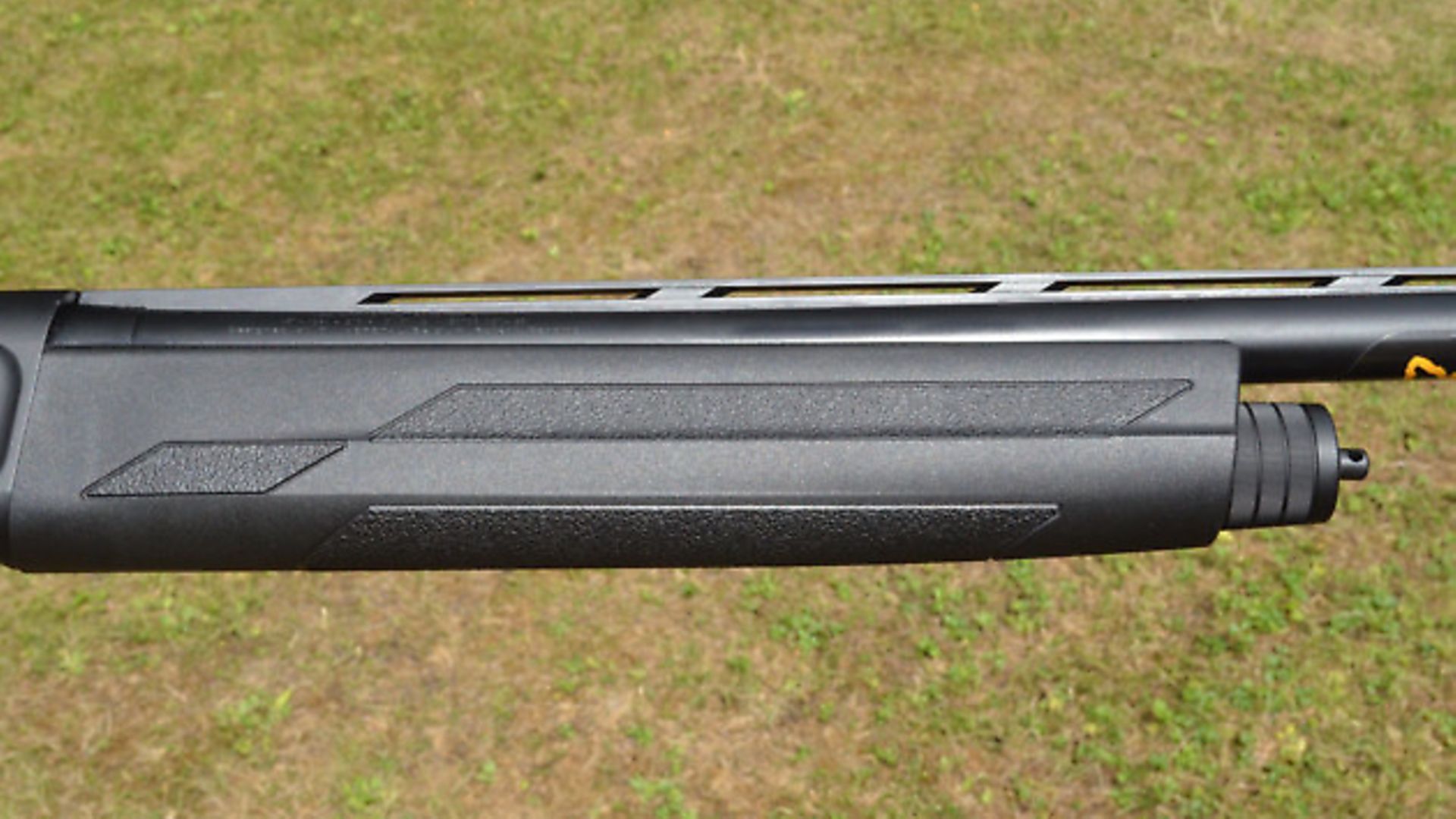 credit: Archant
credit: Archant
Getting techy, the old Browning A5 operated on a so called long recoil system in which the barrel actually moved back into the receiver about 3” to cycle a cartridge. It had to be adjusted for different loads. Later, Browning’s son Val perfected a short recoil system (still involving about 1” of barrel movement) in the ‘Double Automatic’. This boasted a more streamlined form, and, unusual for its time – the 1950s – an aluminium action. Another short-recoil system was used in the more recent (but now discontinued) model A500. In this, the barrel and breechblock remain locked together for about ½” of rearwards travel combined with a rotary bolt-head.
 credit: Archant
credit: Archant
We return to our feature, the new fixed barrel A5. This is what Browning has to say about the shape of the latest creation: “Built from rugged and lightweight aircraft-grade aluminum [sic] alloy, the A5 receiver’s shape is more than a throwback for the sake of nostalgia. The familiar humpback... melds seamlessly with the rib to extend your sight plane, aiding in natural sight alignment for quicker target acquisition and more accurate shooting... The longer sight plane of a rifle aids in keeping you on the target by making it easier for you to make the mostly-instinctive changes to sight alignment as you try to stay on the target. And it works. The longer sight plane of the A5 does the same – helping you to reduce movement along the sight plane as you swing and pull the trigger. The extra-long, flat sight plane was unique to the original A5 and it is back today.”
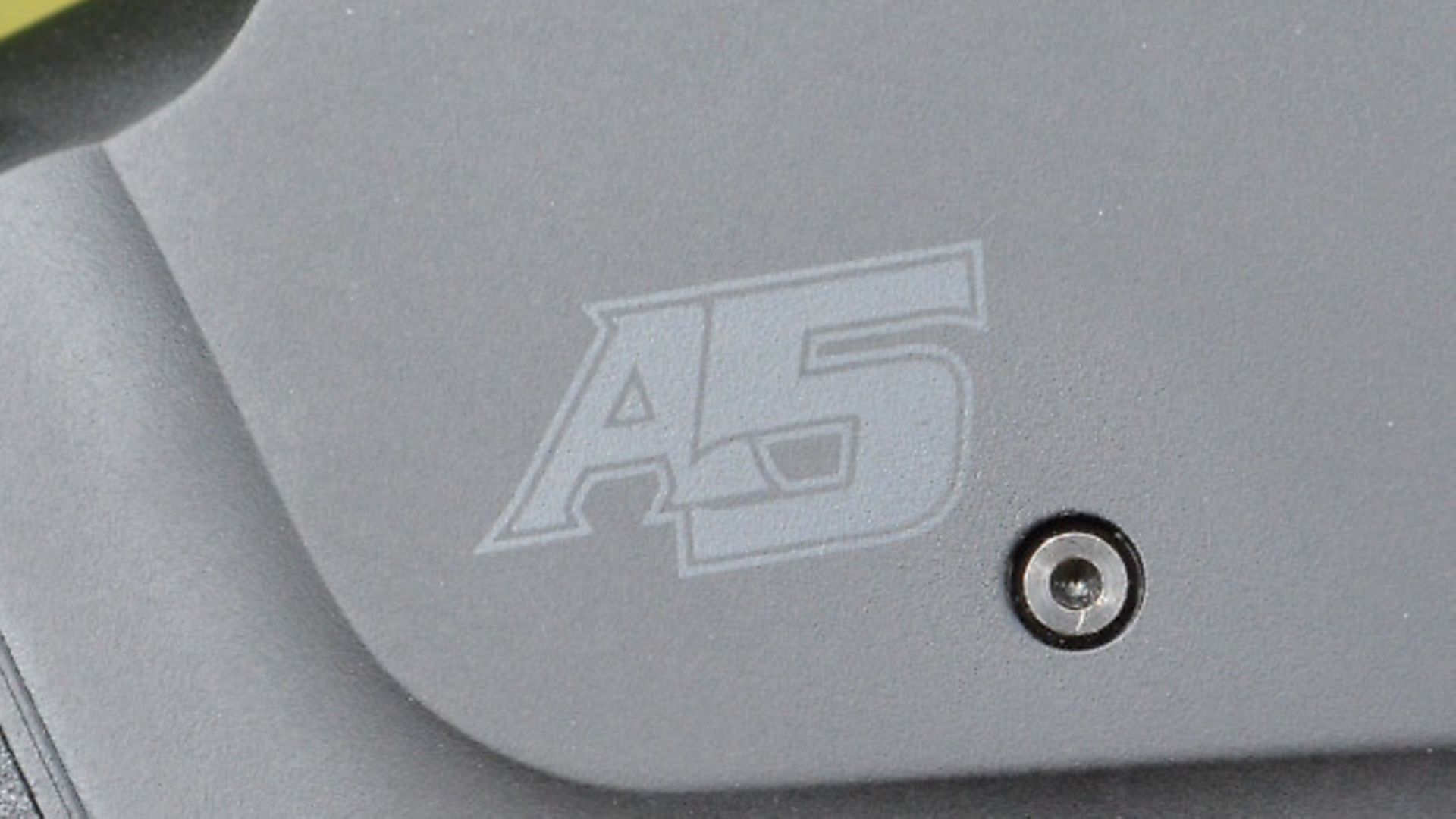 credit: Archant
credit: Archant
Well all semis have a longer sighting plane (something I have always liked in them), in this case it is 8” longer than the 28” of the barrel (26” and 30” versions are available), making for a 36” total. The new A5 has a lightweight barrel profile and the barrel is back bored at 18.8mm with a flat, ventilated, 6mm sighting rib. There’s a fibre optic sight at the muzzles. The chamber is 3½” in the test gun, but 3” in some of the other models. Forcing cones are elongated and the chokes are the new flush fitting Invector DS (double seal) type as seen in the 725 which incorporate a seal into their design to avoid gas leakage in between choke tube and barrel wall as is common with many multi-chokes.
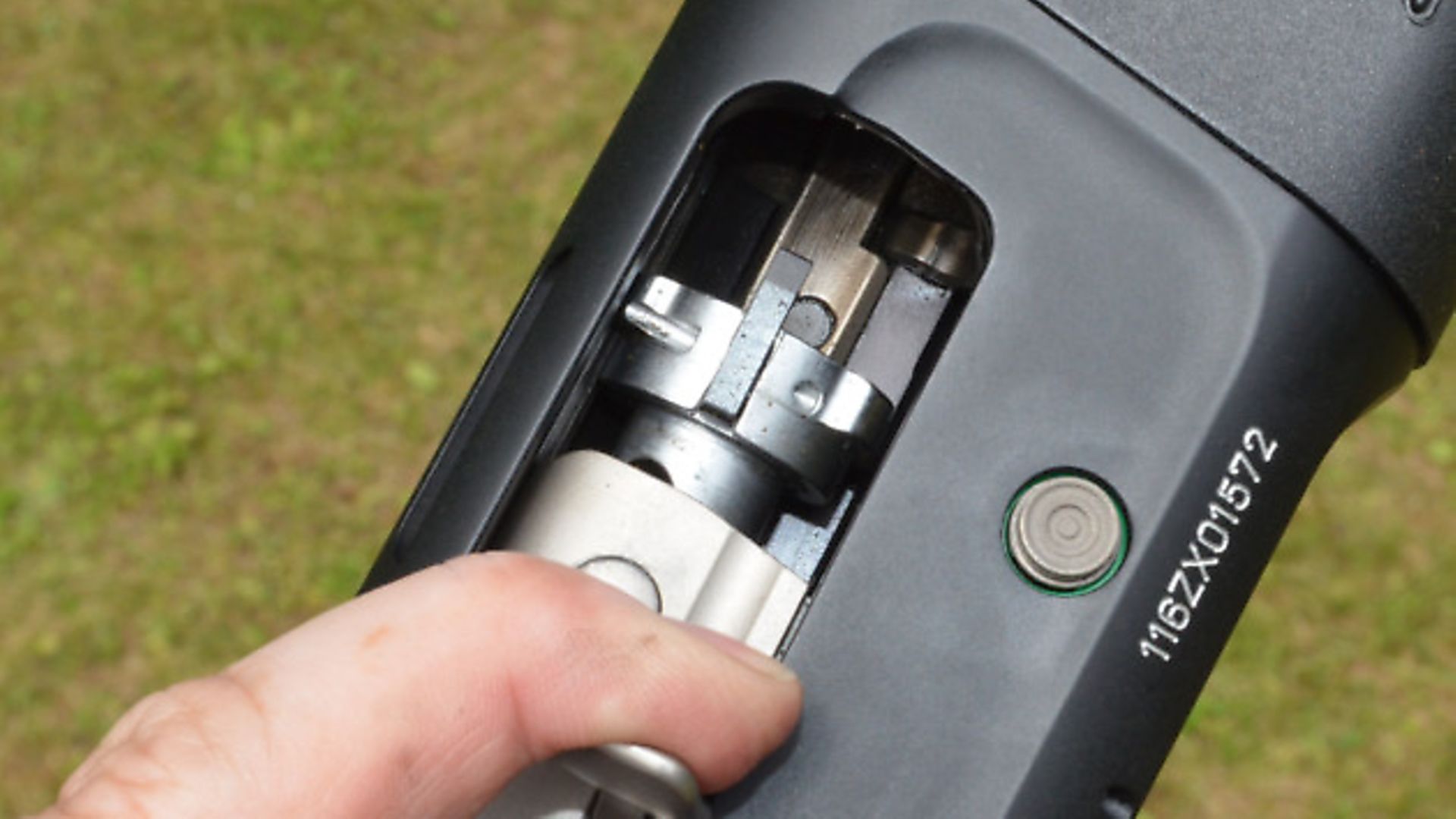 credit: Archant
credit: Archant
What else? Well, the gun has a speed loading system like the original A5 – you can put a round in the mag and it will feed directly into the chamber if the working parts are back. Stock wise, there is a fairly slim grip and forend (the latter made possible by an absence of gas mechanism), and the butt is equipped with an efficient Inflex II recoil pad (which is not too sticky). The standard stock length is just over 14½”, but a lengthening spacer is supplied, as well as shims to alter stock measurements. Out of the box drop is 1¾” and just over 2 1/8”. The new A5 also has a large and handy bolt release latch located just ahead of the trigger guard. This locks the working parts to the rear when the mag is unloaded and releases a cartridge from the mag when the bolt is closed to make loading quicker.
Considering the ‘engine’, the kinetic drive system accumulates recoil energy by means of a spring between the 4 lug bolt head and the main body of the bolt and converts it into movement (rather than using gas operation as seen in most modern semis save the Benelli). When the gun is fired, the spring compresses and at full tension the bolt head unlocks from the barrel and cycling begins. It is guaranteed for 100,000 rounds or seven years. Evidently Browning have great confidence in it and it should cycle loads from 28 to full magnums with no adjustment. n